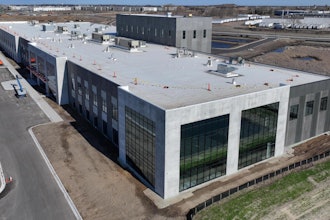CHEYENNE, Wyo. (AP) — People who live in a central Wyoming gas field with tainted groundwater are pressing Gov. Matt Mead for more details about how Wyoming plans to take over and carry on with a U.S. Environmental Protection Agency investigation into the contamination.
They ask whether they might be able to weigh in on the investigation — funded with $1.5 million from the Encana Corp. subsidiary that owns the Pavillion gas field — considering nobody sought their input about the change in plans before the governor's office and EPA jointly announced the shift last week.
"Our main concern is that we were not consulted during your planning process and your plan does not give us any process for input as the investigation moves forward," the group Pavillion Area Concerned Citizens said in a letter to Mead dated Monday and delivered Tuesday. "We were extremely disappointed to learn that we were the last to know."
The letter also asks for details about any upcoming meetings about the new state investigation, how the local residential water wells will be tested, whether the state will address health problems Pavillion-area residents say are caused by the pollution, and if the state investigators will seek public comment.
Pavillion-area farmer John Fenton, chairman of the group, signed the letter.
Mead spokesman Renny MacKay described the change in plans as a decision that needed to be made between the EPA and state. Wyoming officials also consulted in advance with Encana. Mead held a conference call with Pavillion residents right after the announcement, MacKay noted.
He said the governor planned to make the announcement an hour later but a draft news release outlining the deal had been leaked to The Associated Press and the news agency was preparing a story.
"We're still going over it and definitely planning to prepare a thorough response to it for the residents up there," MacKay said of the Pavillion Area Concerned Citizens' letter.
Pavillion-area residents asked and got the EPA to investigate their well water four years ago. They say the water began to stink of chemicals around 2005, when Encana began hydraulic fracturing in the area.
A 2011 EPA draft report tied local groundwater contamination to hydraulic fracturing, or fracking, which is the petroleum industry practice of splitting open oil- and gas-bearing rock by pumping water, sand and chemicals at high pressure down well holes. Never before had the EPA blamed groundwater pollution on fracking, and environmentalists seized upon the report as proof that fracking is a threat.
Along with announcing that Wyoming was taking over the study, the governor's office and EPA also said last week that the federal agency no longer plans to have independent experts review the initial findings or finalize the report.
The EPA found no pathways for contamination to migrate from the strata beneath Pavillion from which gas is extracted to the somewhat shallower aquifer tapped by water wells, according to last week's joint release.
There was no problem with how the study was proceeding, and EPA officials felt no pressure from politicians or the petroleum industry to change course, EPA spokesman Tom Reynolds said Wednesday.
"This was the smartest, most efficient and quickest way to get water to the residents but at the same time continue an investigation that the state was going to take a lead at," Reynolds said. "At the same time we're going to work with the state, they're going to use the resources the EPA has already invested into this issue to continue with an investigation."
The letter to Mead praised the EPA officials involved in the study as "kind, courteous and genuinely concerned" and said they always tried to find answers to their questions.
"We have had a good working relationship," the letter said.
The upcoming study will focus on whether any local gas wells or old petroleum waste product storage pits might be leaking pollutants. MacKay described it as an improvement.
"You've got the support of EPA, and then through the support of Encana too, Wyoming now has the resources to do this further investigation that's really going to provide more answers," MacKay said. "You're going to get a final report on pits, the final report on wellbore integrity, and then you're going to have this comprehensive report that factors in the data that EPA has come up with."
Attempts to reach Fenton by phone Wednesday were unsuccessful. Deb Thomas, an environmentalist who has been working with Pavillion Area Concerned Citizens, said the group also has been waiting to hear from EPA about how the agency will remain involved.
"I don't think that's clear yet," she said.
EPA officials said they still stand by their research and findings, and they reserve the right to continue with peer review at any point. Reynolds said the EPA remains committed to the people of Pavillion.
"Moving forward, EPA is certainly going to look for opportunities to engage Pavillion residents as we have in the past," he said.






















